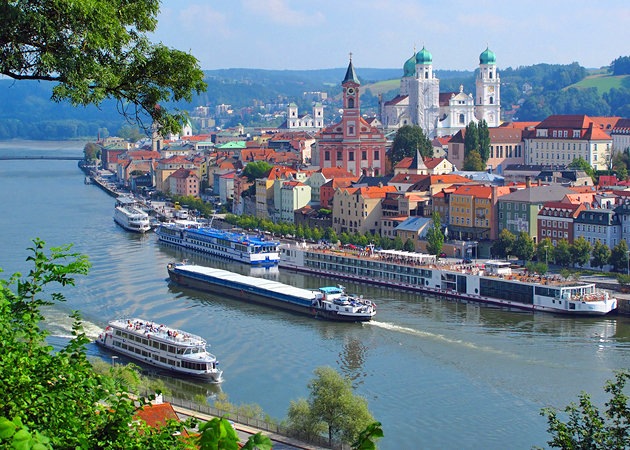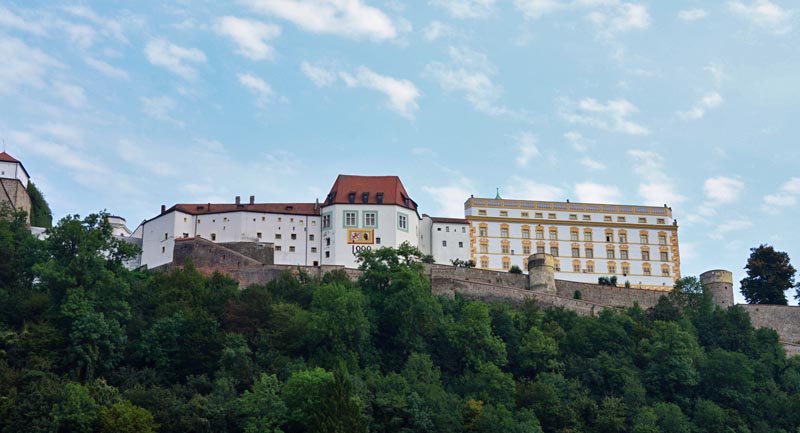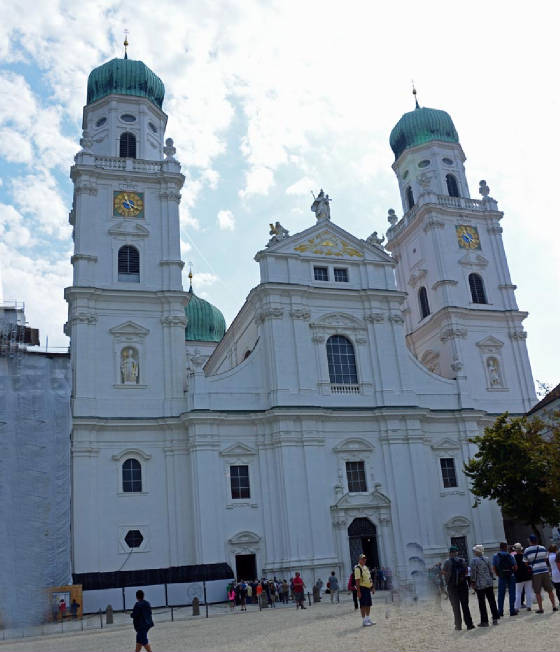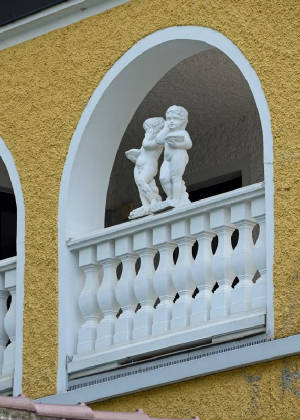|
Passau, Germany
|
|||
|
Passau Germany was the last major city in Germany we stopped at. It is known as the City of the Three Rivers. The Danube, on which we were traveling, the Inn and the Liz. It’s located on the Austrian border. In the heart of Passau on the Old Town’s highest point rises St. Steven’s Cathedral, in which the world’s largest cathedral organ stands Views from the boat as we made our way down the Danube to Passau
There are so many churches in a very small area in Passau. I have included this file photo to help sort them out. St. Paul’s with St. Michael’s in the background. Do the rivers in Germany flood? When you have three major rivers converging, all which are fed by rain and snow melt, the answer is yes. Take a look at the high water marks. The one in 2023 is only outdone by the one in 1501. So much for modern flood control!
The top one is 2013,
the bottom one is 2002 So how dock one get from the dock level to the town level? In this case, single file.
The fortress “Veste Oberhaus” high on a hill overlooking Passau is one of the first sights you see when docking. It was built in 1219 by Passau’s Prince-Bishops in order to control commerce over the rivers. It served as the Prince-Bishop’s residence as well. This is where the Prince-Bishops collected tolls on anything that moved up or down the river St. Michal’s Church on the left and Pilgrimage Church “Mariahilf” on the right are two of the four prominent churches you see in Passau. There are 321 covered steps leading up to this pilgrimage church.
Passau’s magnificent St.Steven’s Cathedral is located on the old town’s highest point. After it had burnt down almost completely in the devastating 1662 town fire, it was rebuilt by the famous baroque architect Carlo Lurago. Its stucco works were done by G.B.Carlone and the frescos were painted by Carpoforus Tencalla, all of them Italien baroque artists. With 17974 organ pipes, 233 stops and 4 carillons. The organ in this cathedral is the world’s largest cathedral organ. All five parts of the organ can be played from the main key board, one at a time or all together, offering the visitor an unforgettable acoustical delight. There is an MP3 recording of this organ accessible further down the page.
Many of us looked at this sculpture trying to figure out what was on the right. Many guessed some kind of bird.A close up reveals that it is a person with a really weird hat and flowing robe. The windows in the back were originally stained glass that was broken in wwII. These windows have been replaced with plain glass and stained glass replacements are be installed as time and mostly money allows. The pulpit where Hell Fire and Damnation sermons were delivered. This organ has 4 sets of pipes referred to locally as carillons. The reference is incorrect as carillons usually refers to a series of bells. I found the main one which is obvious and two more set to the left and right of the main set. Don’t know where the fourth one was hiding.
Click the link below for a 15 minute session of the concert. Obviously you can stop it at any time by clicking your Back Arrow button. Adjust your volume so you do not have any distortion and enjoy.
Listen to this beautiful organ In addition to the main cathedral there was a side hall called the Cathedral Treasury with beautiful tapestries and frescoes.
A 360 degree, 28 sec. video of the fresco molding can be viewed by clicking here. During the short walk to the RatHaus we p[assed some interesting photo ops. Stick your nose in a flowerbed and what do you find? Well in this case a spider. Now this is the Skunk’s kind of chandler. German Beer flip top bottles.
Why are there clocks in the towers of the town halls and in many of the church steeples? When these buildings were constructed, pocket watches and wrist watches did not exist, so it was the only way to keep the town on schedule. Guess they could have checked their Smart Phone. The name of this street is WHAT?
|
|||





